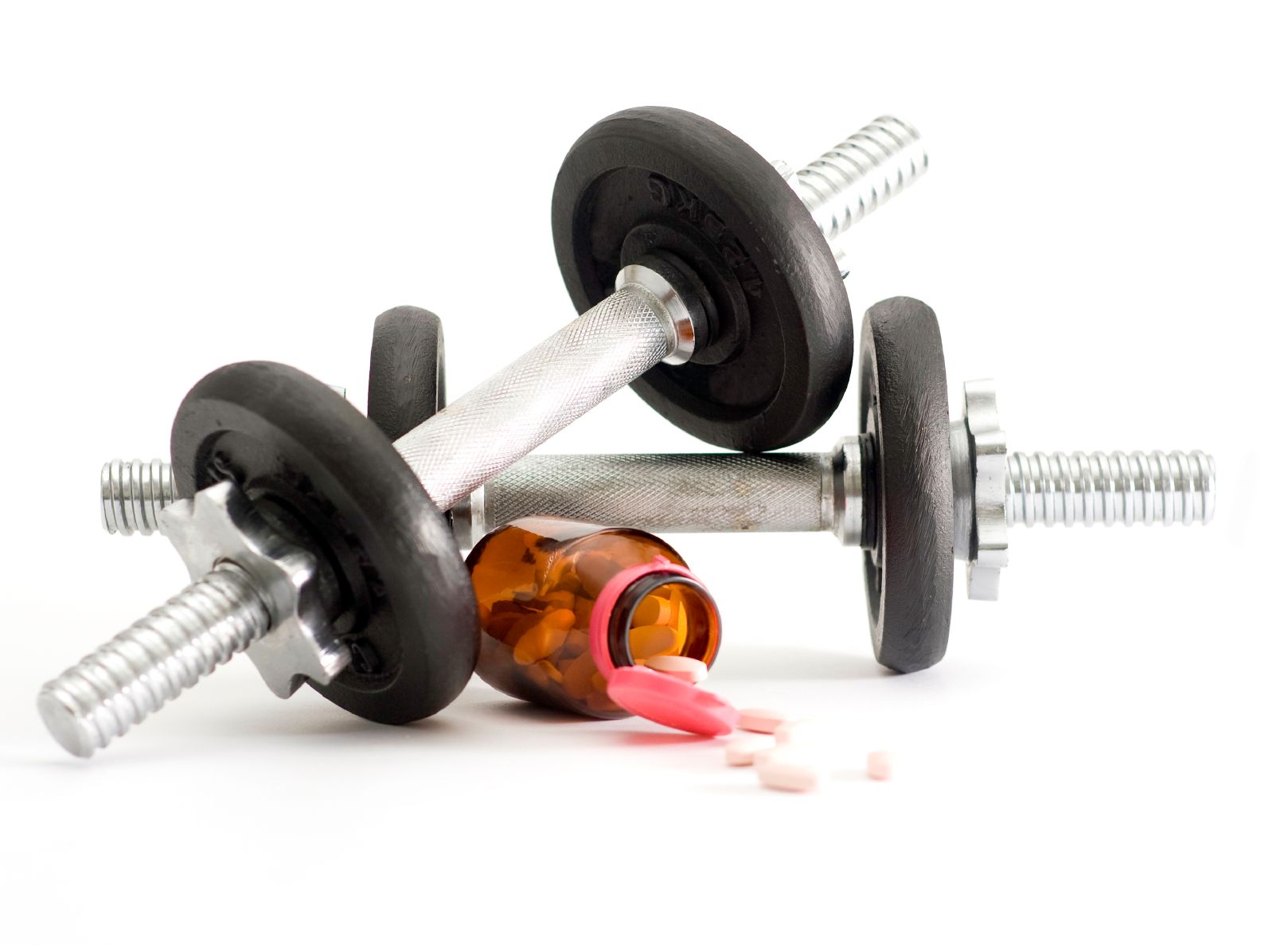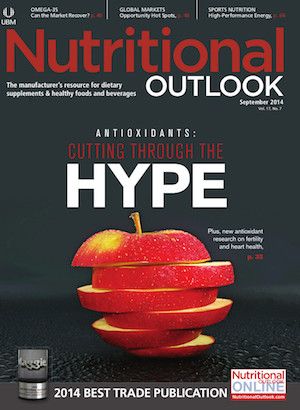Which Are Emerging Adulterants in Sports Supplements?
Sports marketers, beware! Here's a rundown on sports contaminants we're seeing today.

How do dietary supplements become adulterated with drugs and other controlled substances? This is a question I get asked every day as senior research scientist at NSF International, a global public health organization that tests and certifies dietary supplements.
The sports nutrition category in particular is a prime target for adulteration. High-profile adulteration and contamination issues have led consumers to question the safety of these products. In fact, an independent survey of more than 1,000 consumers conducted on behalf of NSF found that 60% are concerned about contaminants and 57% are concerned about banned substances in dietary supplements.
As athletes and consumers seek out over-the-counter miracle products to help them lose weight, build muscle, and maintain endless amounts of energy, companies good and bad step up to meet the demand. Unfortunately, the “desired effects” of a few of these bad products come at a high price to consumer health and safety. This is why scientists and researchers in the field have collaborated to find and expose the controlled substances and adulterants that can be lurking in some sports nutrition products.
This article discusses recent research on sports nutrition adulterants as well as predictions for emerging contaminants the industry should be aware of, including phenylethylamines.
Dimethylamylamine (DMAA)
Researchers discovered that Eli Lilly had patented DMAA in 1944 as a vasoconstrictor inhalant (i.e., narrows blood vessels) for relief of nasal congestion. It reemerged on the supplement scene back in 2005 under Proviant Technologies’ trademarked name Geranamine, described as a “constituent of flower oil sold as an integral component of nutritional supplements.” The ingredient Geranamine was also the secret ingredient in the ErgoPharm product, AMP, which was at the center of a lawsuit in 2006 against Proviant Technologies. How did a pharmaceutical drug with pharmacological activity similar to amphetamine and ephedrine become a constituent of geranium? Formulators seized upon an obscure article in a Chinese journal that claimed to find DMAA in geranium oil.
According to the Dietary Supplement Health and Education Act (DSHEA), which defines and regulates dietary supplements in the United States, a dietary supplement company can formulate its products with approved food ingredients that have been used in dietary supplements and food products prior to October 15, 1994. This allows harmless and well-understood dietary ingredients such as vitamin A and omega-3s to be used in supplements without unnecessary risk assessments and preapprovals.
Because geranium oil fits these criteria, it would not have to go through the rigorous preapproval process required for new dietary ingredients. The American Herbal Products Association’s (AHPA; Silver Spring, MD) Herbs of Commerce is generally used as a guide to determine whether an ingredient falls within this category. Pelargonium graveolens, the Latin name for rose-scented geranium, is listed in this reference.
Of course, DMAA is not a constituent of geranium oil. Researchers at NSF International1 as well as numerous independent researchers2,3,4,5 tested geranium oils and plant materials, attempting to replicate the findings in the Chinese paper, but were unsuccessful. Scientific reviews of the Chinese paper found it lacking in several key elements. Additionally, FDA began receiving adverse-event reports associated with DMAA-containing products. The agency finally removed DMAA from the marketplace by issuing warning letters to 11 companies in April 2013 followed by subsequent visits from investigators to ensure compliance.
N,alpha-diethylphenylethylamine
As the popularity of DMAA waned, DEPEA, or N,alpha-diethylphenylethylamine, appeared in the market. DEPEA was found in supplements labeled as containing dendrobium extract. The chemical itself was not listed on the label, but other chemicals with similar structures were listed. One listed substance, N,N-diethyl-beta-phenylethylamine, is a structural isomer-a chemical cousin-of DEPEA and is rapidly eliminated from the body due to these structural differences. However, this chemical cousin, although listed on the label, was not what NSF and other researchers found in the actual product.
Further testing and research at NSF International’s U.S. labs and the labs at the National Institute for Public Health and the Environment in the Netherlands led to the discovery of two concerning findings: 1) DEPEA was present, not the labeled compound, and 2) there is no scientific evidence to support the presence of either compound in dendrobium extract.6 Further research on the pharmacological activity found a shocking similarity with methamphetamine. In this case, surreptitious supplement companies completely fabricated an ingredient’s constituents to conceal a potentially dangerous substance added to a product. In April 2014, FDA supported this assertion by issuing a warning letter to Driven Sports, the company responsible for the product adulterated with DEPEA, Craze.
Emerging Adulterants
In my opinion, phenylethylamines are emerging as the next problem adulterant. Beta-phenylethylamine (PEA) is a compound found in foods such as chocolates and cheeses and can act on some of the same receptors in the body as epinephrine, possibly the reason for the chocolate “high” some claim to experience. Fortunately for chocolate lovers, the compound is found in trace amounts in chocolate and is rapidly metabolized in the body, keeping regulators from listing it as a controlled substance. However, I can see chemical cousins of PEA appearing in products, whether they qualify as dietary ingredients or not. By changing the chemical structure slightly-but not enough to substantially change the activity-exploitive companies attempt to evade detection of such adulteration.
These are just a few examples that illustrate how unscrupulous supplement companies circumvent regulations, either by utilizing substandard scientific work to support their claims or fabricating an ingredient to appear in compliance with the regulations. I see this as a continuing trend, with formulators under pressure to design and deliver novel, efficacious products to probably the fastest-growing segment of the supplement market: sports nutrition. In fact, 88% of consumers expressed interest in energy-boosting products, as reported in a recent survey by Innova Market Insights at this year’s Institute of Food Technologists’ Annual Meeting and Food Expo.
I see the sports nutrition segment under intense pressure and the most susceptible to adulteration. Many industry experts point to intentional fraud made even easier by increasingly complex global supply chains. Others say scientific and technical ignorance may be leading companies to form bad habits with regards to their testing and quality-assurance programs. My 10-plus years of experience in testing dietary supplements and other food products have taught me that it is likely a mix of both, but it is essentially up to companies to ensure the security of their supply chains and safety of finished products.
References
- Austin KG et al., “Analysis of 1,3 dimethylamylamine concentrations in Geraniaceae, geranium oil and dietary supplements,” Drug Testing and Analysis, vol. 6, no. 7-8 (July–August 2014): 797–804
- Zhang Y et al., “1,3-dimethylamylamine (DMAA) in supplements and geranium products: natural or synthetic?” Drug Testing and Analysis, vol. 4, no. 12 (December 2012): 986–990
- Di Lorenzo C et al., “Could 1,3 dimethylamylamine (DMAA) in food supplements have a natural origin?” Drug Testing and Analysis, vol. 5, no. 2 (February 2013): 116–121
- Lisi A et al., “Studies of methylhexaneamine in supplements and geranium oil,” Drug Testing and Analysis, vol. 3, no. 11–12 (November-December 2011): 873–876
- ElSohly MA et al., “Pelargonium oil and methyl hexaneamine (MHA): analytical approaches supporting the absence of MHA in authenticated Pelargonium graveolens plant material and oil, “ Journal of Analytical Toxicology, vol. 36, no. 7 (September 2012): 457-471
- Cohen PA et al., “A methamphetamine analog (N,alpha-diethyl-phenylethylamine) identified in a mainstream dietary supplement,” Drug Testing and Analysis, vol. 6, no. 7–8 (July-August 2014): 805–807
Photo © iStockphoto.com/oriba













